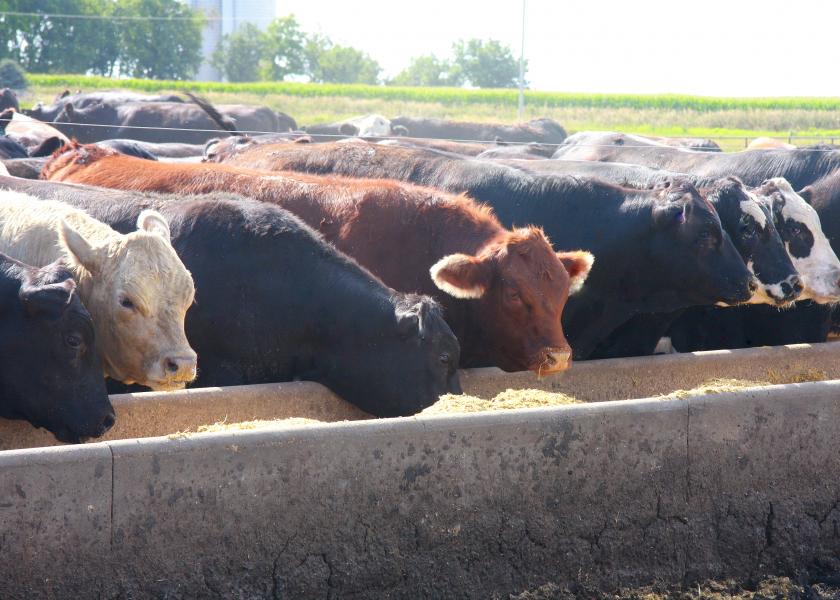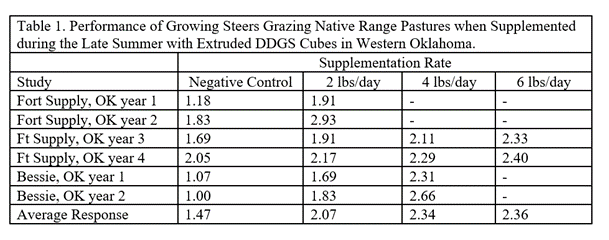Can Distiller’s Grains Cubes Replace Traditional Supplements for Stockers in the Late Summer?

The quality of native range declines during the late summer drastically reducing performance of stocker calves. The Oklahoma SuperGold Program was designed to meet protein, energy, and mineral deficiencies for steers grazing native range in the late summer using grain milling byproduct based supplements. Feeding 2.5 lb/day of a mid-protein (25% crude protein) supplement including an ionophore increases gains by 0.7 lbs/day adding a pound of gain for every 3.6 pounds of supplemental feed.
Recently an extruded distiller’s grains cube has become available in the region. Research by Jordan Adams at Oklahoma State University showed that the extrusion process decreased the fiber content while increasing the crude protein, fat and TDN content of the distiller’s grains; and increasing flexibility by enabling feeding directly on the ground.
A series of experiments by OSU graduate student, Zane Grigsby, on native grass prairie sites at the USDA Southern Plains Range Research Station near Fort Supply and the OSU Marvin Klemme Range Research Station near Bessie investigated using distiller’s grain cubes in an Oklahoma SuperGold supplementation program for growing steers with mineral supplements containing ionophores offered free-choice in a separate complete mineral mix.

On average, supplementing with 2 pounds per day during the late summer increased gains of steers by 0.6 lbs/day, requiring 3.3 pounds of feed per pound of added gain. Feeding additional supplement increased gains but with decreasing supplemental efficiency. These higher feeding rates have the potential to increase stocking rates on pasture as we have seen with previous research. Supplementation of grazing calves during the late summer can be highly profitable even in years with high input costs.
References:
Adams, J. M., et al. 2022. J. Anim. Sci. 100:1-11 skac097 https://doi.org/10.1093/jas/skac097
Grigsby, Z. N., et al. 2023. J. Anim. Sci. 101(Suppl. 1):84-85. (Abstr). https://doi.org/10.1093/jas/skad068.100
Grigsby, Z., et al. 2022. J. Anim. Sci. 100 (Suppl. 3): 174-175 (Abstr.) https://doi.org/10.1093/jas/skac247.322
Grigsby, Z. N., and P. A. Beck. 2022. J. Anim. Sci. 100 (Suppl. 1):38-39 (Abstr.). https://doi.org/10.1093/jas/skac028.073







